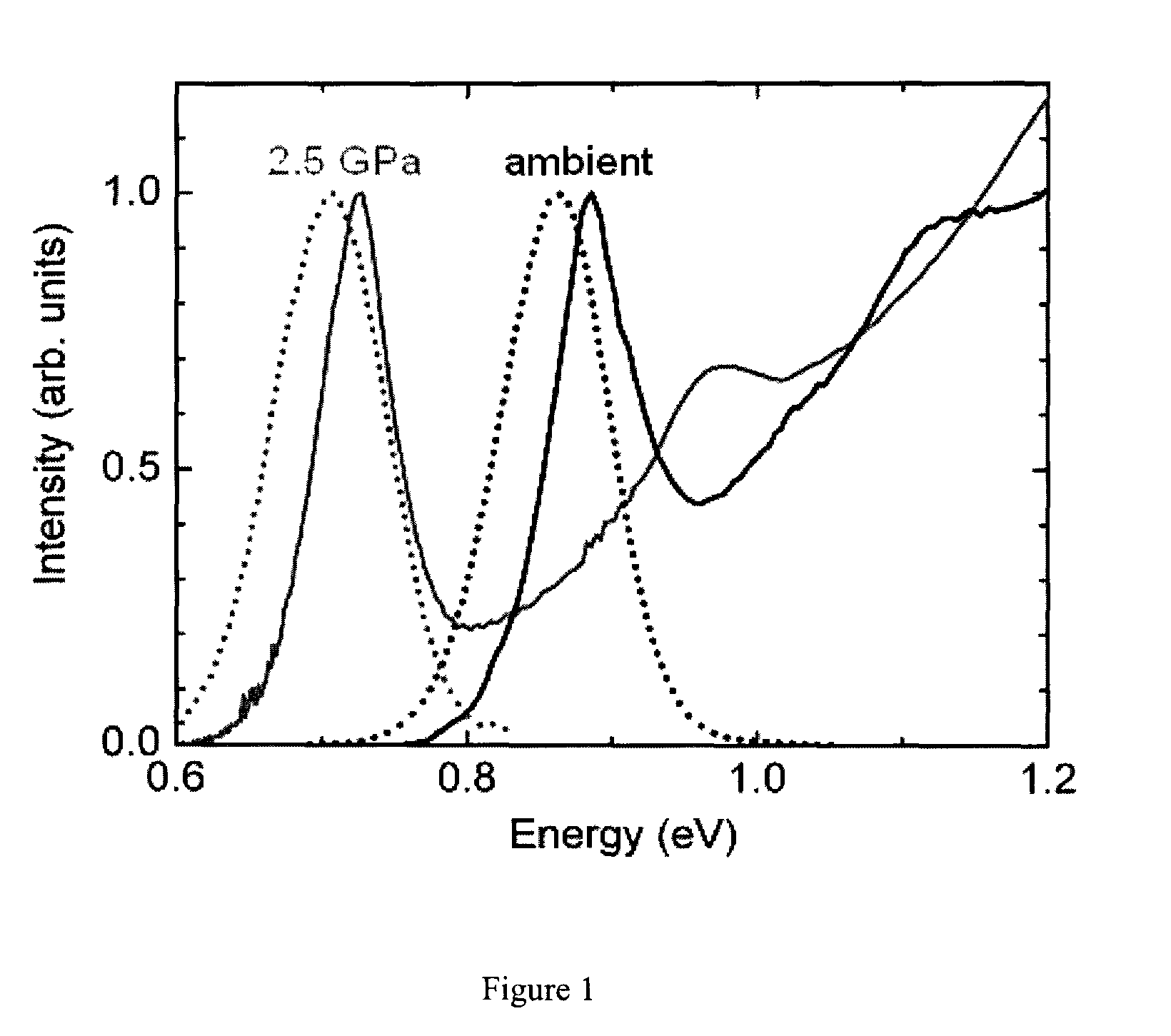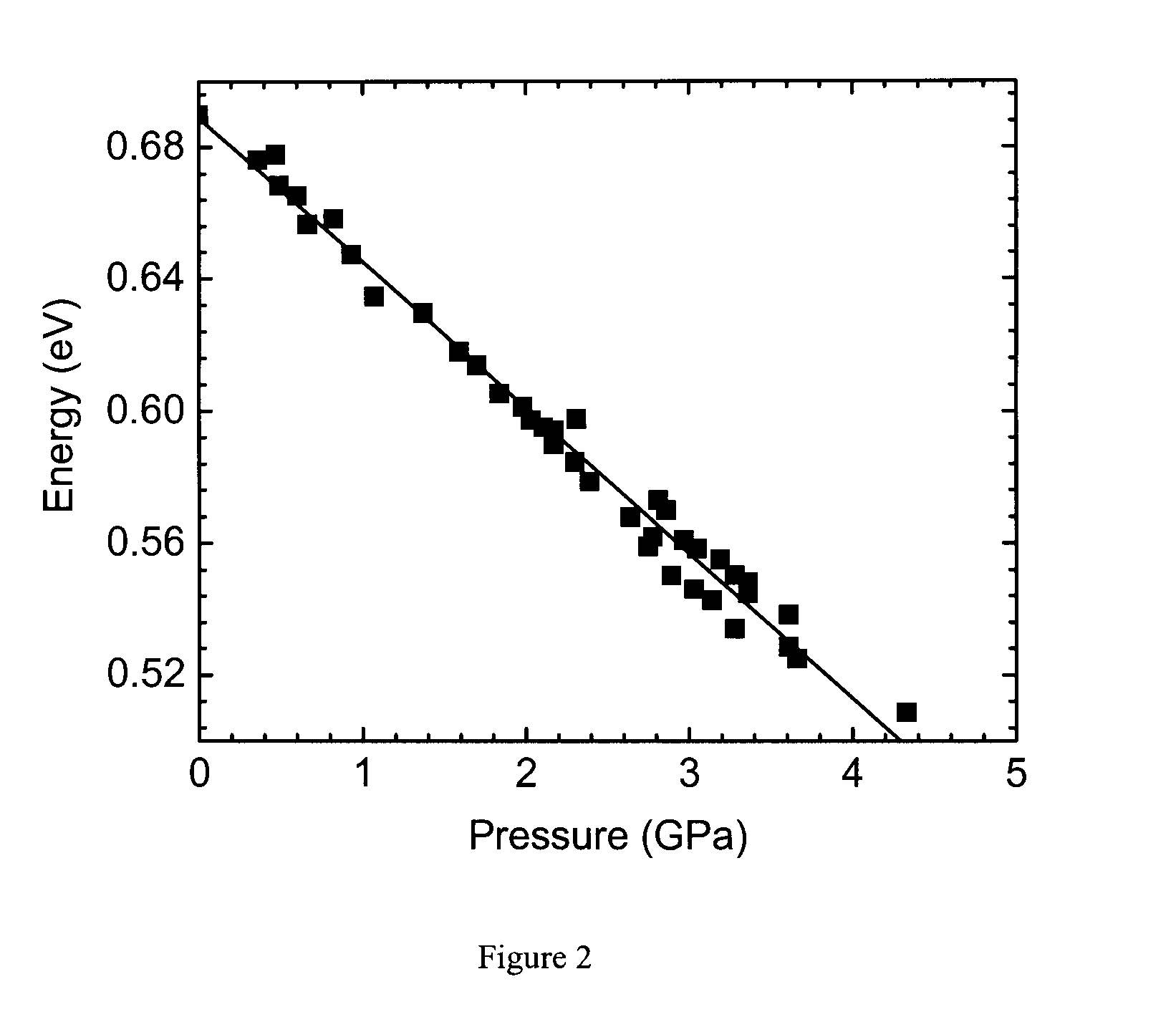Real time measurement of shock pressure
a real-time measurement and shock pressure technology, applied in the field of fiber-based optical pressure sensing methods, can solve the problems of spurious voltages affecting the measurement, the sensor element exposed to the shock must be inexpensive, and the electrical connection and wires are awkward for some applications, so as to reduce the band gap, the response time is fast enough, and the effect of less invasiveness
- Summary
- Abstract
- Description
- Claims
- Application Information
AI Technical Summary
Benefits of technology
Problems solved by technology
Method used
Image
Examples
Embodiment Construction
[0026]The invention is a fiber-based optical pressure-sensor, with response time fast enough for shock wave measurements, made using semiconductor nanocrystal quantum dots (NQDs) as the active transducing material. NQDs are very small particles of semiconductor material on the order of nanometers in size, which have unique properties due to quantum confinement effects. Most NQDs made of common semiconductor materials, such as II-VI, III-V, IV-VI and Group IV materials, demonstrate bright, size-tunable photoluminescence (PL), or fluorescence. As such, they are the subjects of current investigations for applications ranging from LEDs and lasers, to sensors and bio-labels.
[0027]The application of high pressures to many common bulk semiconductors causes a large change in the size of the band gap, as observed by optical absorbance or by conductance measurements. The present inventors have recently demonstrated that PbSe NQDs show a strong reduction of the band gap with application of sta...
PUM
 Login to View More
Login to View More Abstract
Description
Claims
Application Information
 Login to View More
Login to View More - R&D
- Intellectual Property
- Life Sciences
- Materials
- Tech Scout
- Unparalleled Data Quality
- Higher Quality Content
- 60% Fewer Hallucinations
Browse by: Latest US Patents, China's latest patents, Technical Efficacy Thesaurus, Application Domain, Technology Topic, Popular Technical Reports.
© 2025 PatSnap. All rights reserved.Legal|Privacy policy|Modern Slavery Act Transparency Statement|Sitemap|About US| Contact US: help@patsnap.com



